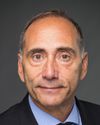I would like to add to that. Coming back to the meme that is circulating, of course, all those people who might have different careers, they all get the same pay. It's always been that way and it continues to be because we're conscious of not having any of those barriers, but thank you for your words.
I'll talk first of all about recruiting. We had three OAG reports that told us that we had to get better at recruiting. We took them seriously. We've created Operation Generation. Operation Generation is a very specific operation, on a yearly cycle, for domestic operations. I'm the supporting commander and I get access to the resources of the environments to come and get us to do this. Specifically we're going after the groups that we want to come and bring their talent to the forces.
You're going to see that in the fall. There's going to be a ship, probably HMCS Saint John, with a helicopter deck on board. They'll do a Great Lakes cruise and they'll go specifically to those areas along the Great Lakes, all the way down to Toronto and past there. We're going to go and attract people, to come and see what it is we're doing.
First and foremost, because we want to get those specialties into our ships, we'll make sure that the audiences we're bringing in to meet the ships, meet the crews and everything else will include women and visible minorities, so they can themselves get a chance to do a hands-on.
Oftentimes, the challenge comes down to letting people know what the opportunity is. That's why we have to focus a lot more on letting them know. To that end, we have created, again as part of the response to the OAG report, a new website for recruiting. I encourage you to go and see it at forces.ca. In there we emphasize that this is an organization that will accept any and all Canadians who want to serve. We make it very visible, not only in the imagery but in the explanation, and we demystify things that in the past have traditionally stopped people from joining.
How do you do the PFT test? This seemed to be something that caused people to self-select out of the process. They can see how it's done and realize just how well they can do it. With a number of women doing the test, they can actually see that they are good to go.





